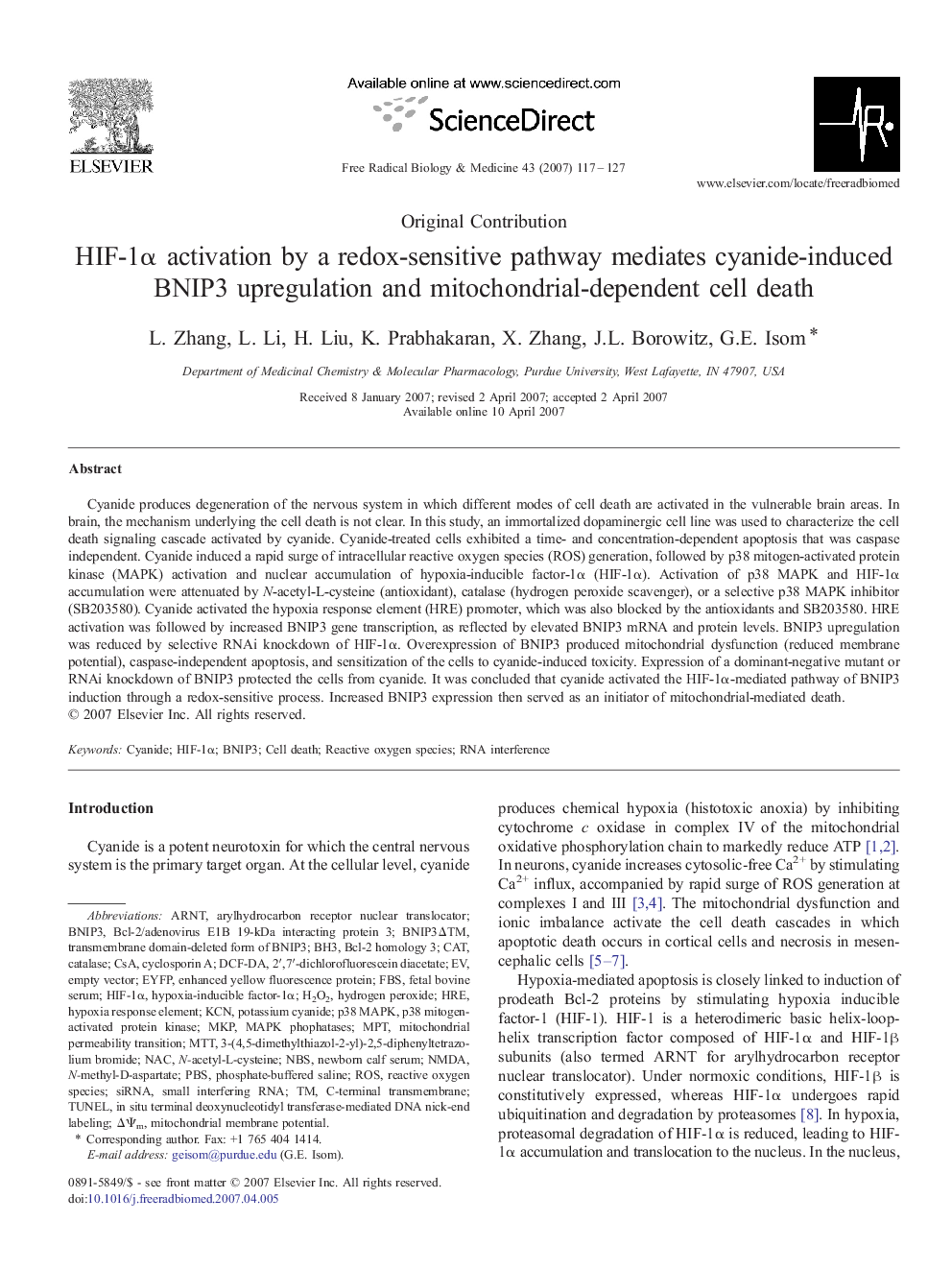| Article ID | Journal | Published Year | Pages | File Type |
|---|---|---|---|---|
| 1911662 | Free Radical Biology and Medicine | 2007 | 11 Pages |
Cyanide produces degeneration of the nervous system in which different modes of cell death are activated in the vulnerable brain areas. In brain, the mechanism underlying the cell death is not clear. In this study, an immortalized dopaminergic cell line was used to characterize the cell death signaling cascade activated by cyanide. Cyanide-treated cells exhibited a time- and concentration-dependent apoptosis that was caspase independent. Cyanide induced a rapid surge of intracellular reactive oxygen species (ROS) generation, followed by p38 mitogen-activated protein kinase (MAPK) activation and nuclear accumulation of hypoxia-inducible factor-1α (HIF-1α). Activation of p38 MAPK and HIF-1α accumulation were attenuated by N-acetyl-L-cysteine (antioxidant), catalase (hydrogen peroxide scavenger), or a selective p38 MAPK inhibitor (SB203580). Cyanide activated the hypoxia response element (HRE) promoter, which was also blocked by the antioxidants and SB203580. HRE activation was followed by increased BNIP3 gene transcription, as reflected by elevated BNIP3 mRNA and protein levels. BNIP3 upregulation was reduced by selective RNAi knockdown of HIF-1α. Overexpression of BNIP3 produced mitochondrial dysfunction (reduced membrane potential), caspase-independent apoptosis, and sensitization of the cells to cyanide-induced toxicity. Expression of a dominant-negative mutant or RNAi knockdown of BNIP3 protected the cells from cyanide. It was concluded that cyanide activated the HIF-1α-mediated pathway of BNIP3 induction through a redox-sensitive process. Increased BNIP3 expression then served as an initiator of mitochondrial-mediated death.
